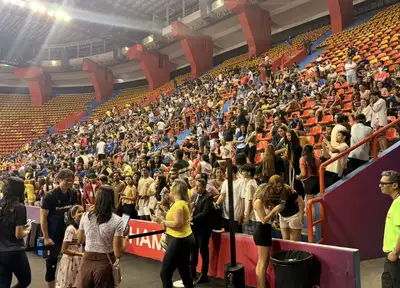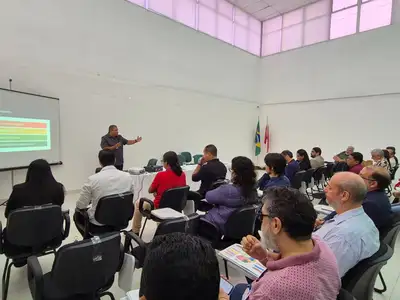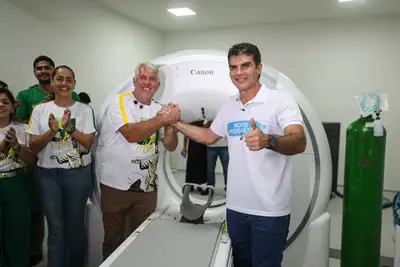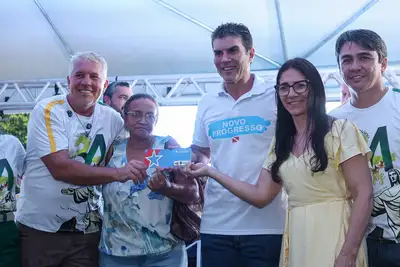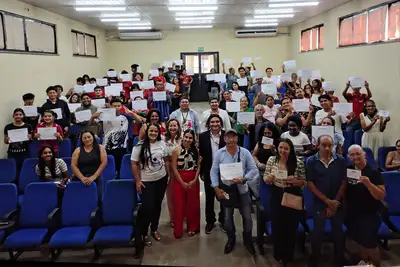Government of Pará removes dividers for the public to see the first section of the Nova Doca Linear Park
The public can now see the first part of the work that combines leisure, sustainability, and sanitation
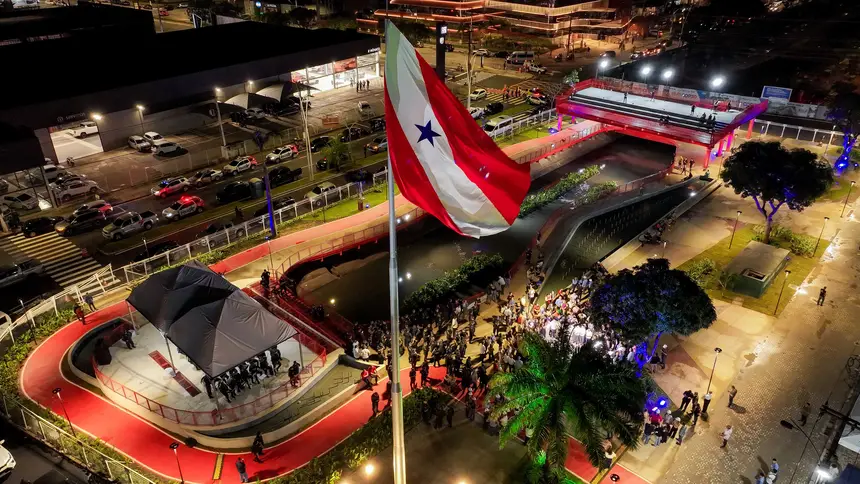
The first section of the Nova Doca Linear Park can now be seen up close by the population of Belém. On the night of this Monday (31), the governor of Pará, Helder Barbalho, and the vice governor, Hana Ghassan, were at block 1 of the canal – located between Avenida Pedro Álvares Cabral/Rua Belém and Avenida Marechal Hermes – which had traffic released.
With the new pavement and the barriers removed, it is possible to see the sustainable landscaping and the installation of public equipment that will make up the Linear Park, one of the investments for the COP 30 (World Conference on Climate Change) taking place in the capital of Pará this November.
"Today is an important day! We have released traffic in this first stage of the Nova Doca intervention, a project that is part of the actions being executed by the State Government, in partnership with the City Hall, to prepare our city for COP 30. This work begins the delivery phase. We are releasing traffic between Marechal Hermes and Rua Belém, which makes up Avenida Pedro Álvares Cabral, facilitating vehicle flow. The intention is to create a delivery circuit for this work in stages. In 20 or 25 days, we will deliver the next block (up to Rua Municipalidade), and every 20 days we will deliver another block of Nova Doca until we reach the end," explained Governor Helder Barbalho.
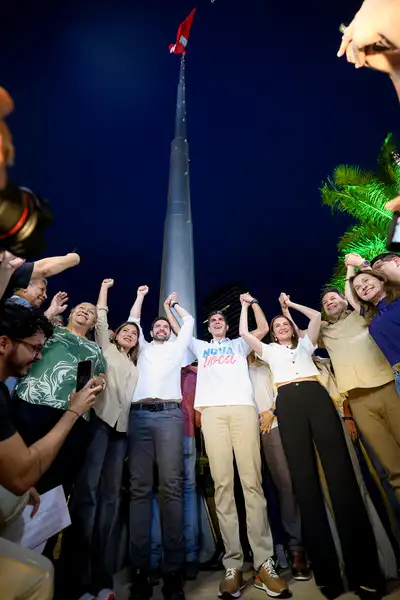
During the ceremony, Governor Helder Barbalho, alongside the first lady, Daniela Barbalho, Vice Governor Hana Ghassan, and the mayor of Belém, Igor Normando, performed the symbolic act of raising the Flag of Pará on a 25-meter mast that is part of the Nova Doca equipment. The ceremony took place to the sound of the Official Anthem of the State, sung by the Military Police Band of the State of Pará.
Sustainability - With 70% of services completed and over 520 workers, Nova Doca has already received transplanted trees from other projects, which are also investments for COP 30. In total, 180 trees will be planted along the eight blocks of the canal.
Block 1 features the "Suspended Gardens," structures made from recycled materials, such as rebar that would have been discarded, but now serve as support for live plants, installed where direct planting is not possible, providing an ecological solution for shading.
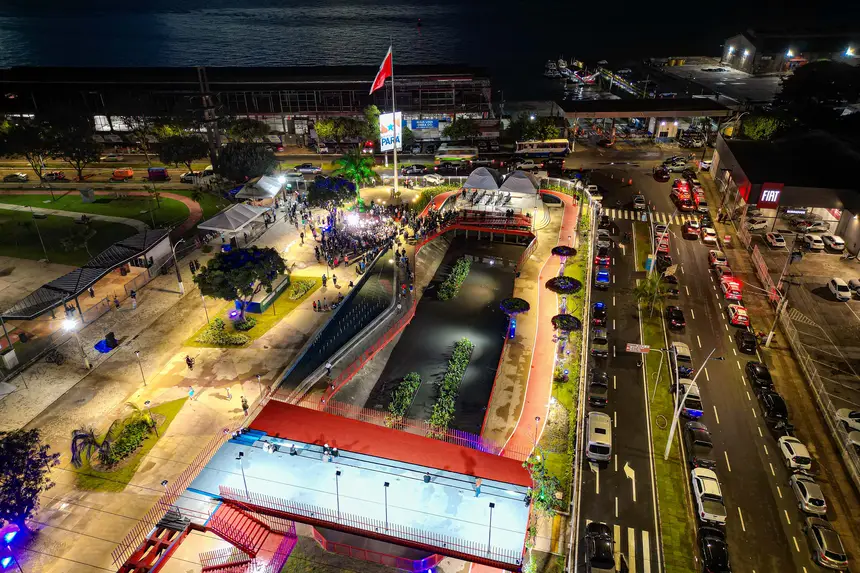
"We will have all-natural tree cover, and at this moment, a part of the vegetation is already being implemented that can, over time, consolidate. Hana posted an interesting video explaining that some existing vegetation here is part of the water treatment strategy," highlighted Governor Helder Barbalho.
The effluent treatment system through wetlands, the so-called "filter gardens," uses plants to purify the canal water, reducing environmental impacts in an economical and effective way.
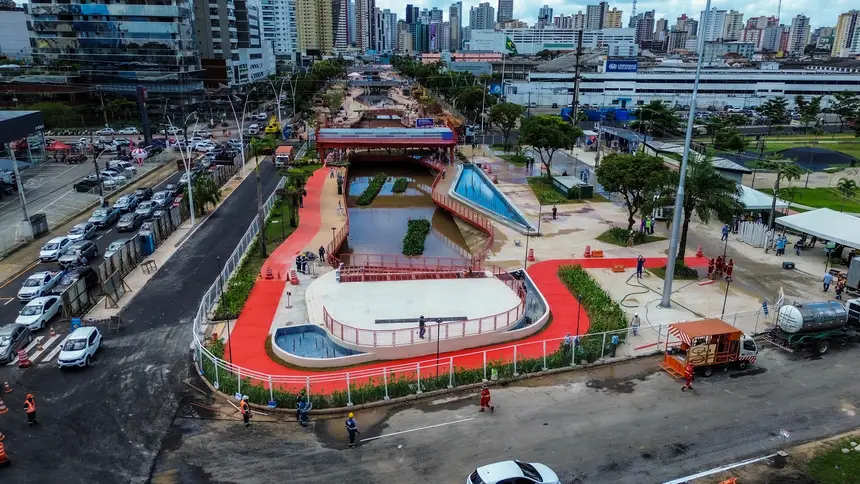
In addition to the "peanut" grass, a vegetation that improves soil quality by removing impurities, the Nova Doca project will have bioretention basins, which are structures considered Nature-Based Solutions (NbS). They accumulate and filter rainwater, preventing flooding and clogging of ditches and drains.
Public and leisure facilities – With services executed through the State Department of Public Works (Seop), block 1 of Nova Doca is receiving the structure of the walkway with an elevated viewpoint, which will also have a bleacher for contemplation. The area will also feature a water ballet and two interactive fountains next to the events and cultural activities area, where the structure of the image of Our Lady of Nazareth is usually set up during the Círio.

A bike lane begins in block 1 of Nova Doca, connecting the entire linear park, ensuring more safety for the population, which was previously exposed to vehicle traffic. The intervention encourages the use of sustainable modes of transportation.
Sanitation - Nova Doca is also receiving work aimed at ensuring the proper collection of sanitary sewage from properties located around the canal, which will be collected properly and treated at the Una Treatment Station (ETE), installed on Arthur Bernardes Highway.
The sanitation work will ensure the removal of the volume of sewage that is irregularly discharged into the canal, improving water quality and providing more basic infrastructure for the population.
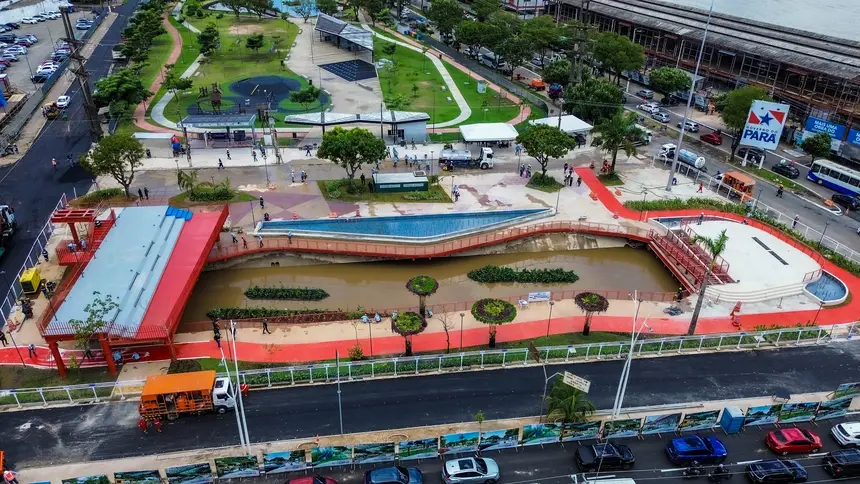
Block 1 of Nova Doca has also received six new sluice gates. Newly installed, the equipment has proven effective in preventing the flooding that has historically plagued the region during high tide and has transformed the reality and quality of life for thousands of people in the neighborhoods of Reduto, Umarizal, and Telégrafo.
Governor Helder Barbalho emphasized the importance of the sluice gates in ending flooding in the Nova Doca area.
"Sluice gates have been installed to mediate the flow of water, so the water in the canal will not be at the same level as the water in the rivers. This provides a solution to prevent flooding. Just today we had a high tide period. And with what is being planned here, we are ensuring a definitive solution so that the waters from the river do not advance through the Doca canal anymore," emphasized the head of the state executive.
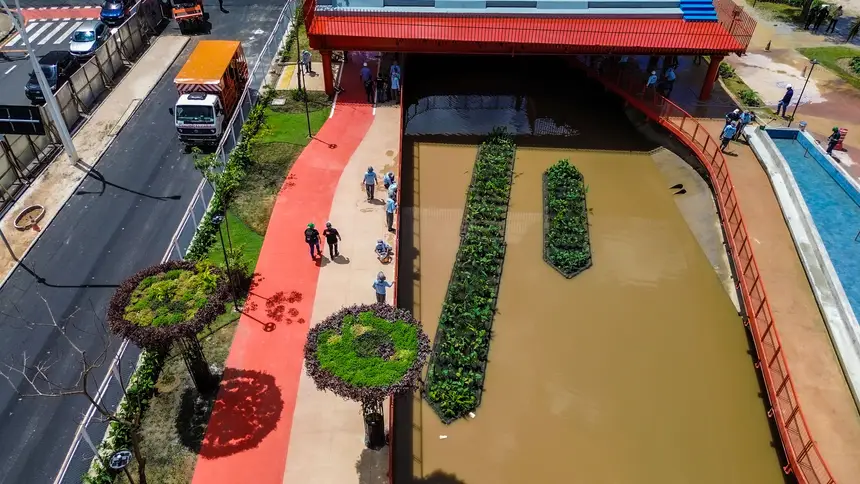
"I want to thank Vice Governor Hana, who is coordinating all these works, which are advancing with a speed never seen before in our capital, both in terms of the volume of works and the results of delivery. I think we are turning the page on that concept that works would start and deadlines would not be met. We are demonstrating that with management and competence, it is possible to start and complete works on time, generating more than 5,000 direct jobs in construction," added Helder Barbalho.
Nova Doca Works continue to advance
Coordinated by the State Department of Public Works (Seop), the Nova Doca works continue in the eight modules along the road. In addition to the finishing phase of the first blocks, the current planning includes foundation, launching, and concreting of metal pieces, as well as driving support piles for the canal structure.

The construction of the Linear Park
A partnership between the Government of Pará and the Federal Government, through Itaipu Binacional – involves 1.2 kilometers of canal, with drainage, landscaping, urbanization, and construction of walkways, as well as the replacement of sluice gates for tide control to prevent flooding.
More than 2.4 kilometers of Avenida Visconde de Souza Franco will also be paved, and other deep and shallow drainage systems will be constructed to receive rainwater, sanitary sewage network, and drinking water piping. The project also includes a bike lane and a clean energy system.
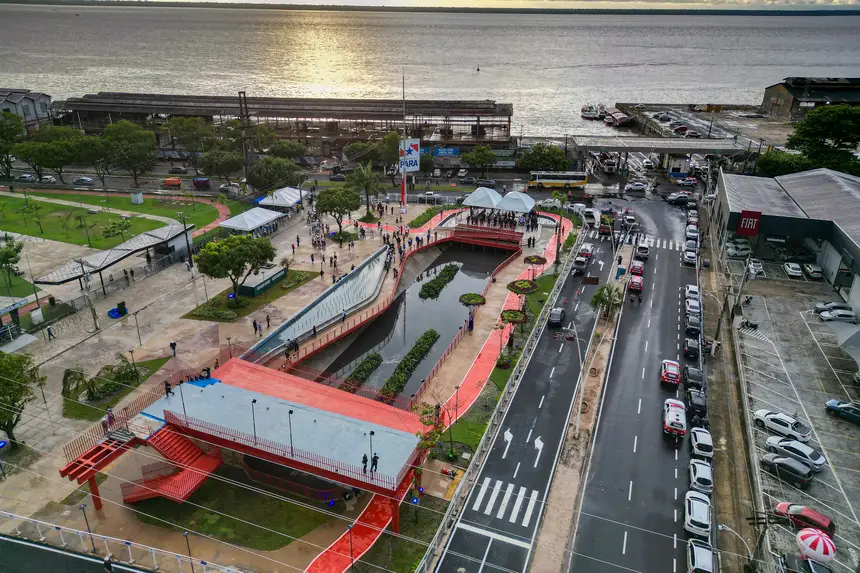
"We still have other stages to finalize, but we have already had this first moment for the population of Belém to follow the progress of the work, as it is they who will benefit from this public equipment that will be delivered by the Government of Pará. This is a milestone for the city of Belém, an investment in quality of life, improvement of urban mobility, a new leisure area for people to gather," said the Secretary of Public Works, Ruy Cabral.


